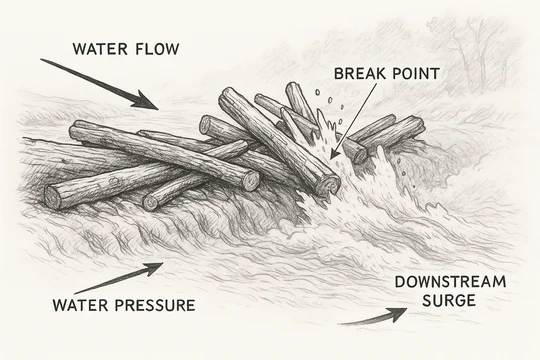
Before you get too excited, defendants, this case involved a scheduling order using Judge Connolly's form, which provides only a single round of infringement and invalidity contentions, and explicitly requires good cause to amend.
Most District of Delaware scheduling orders include two rounds of contentions (initial and final), with the second round typically coming around the close of fact discovery. It is unlikely to be as difficult to amend in cases like those.
Regardless, I thought this was an interesting result worthy of a post. In Cognipower LLC v. Fantasia Trading, LLC, C.A. No. 19-2293-JLH-SRF (D. Del.), the Court stayed the case pending an IPR back in 2021. The case was ultimately re-assigned to Judge Hall, but kept its Judge Connolly-style scheduling order.
The stay continued through the resolution of the IPR and related appeal, and the Court lifted in February 2024.
In August—six months after the Court lifted the stay, but three months before the close of fact discovery—the plaintiff moved to expand the case in multiple ways. It moved to:
- Supplement its infringement contentions to add 40 new products
- Compel discovery on unaccused products
- Expanded its doctrine of equivalents theory
- Assert an earlier conception date to evade the accused infringer's prior art
- Amend its complaint to add post-suit willfulness
Judge Fallon denied everything, mostly due to the patentee's six-month delay in moving since the stay was lifted.
As to the 40 new accused products, the Court noted that—after the stay—the plaintiff had served discovery with a narrower definition of accused products than its original infringement contentions:
Plaintiff's interrogatories served more than two months after the stay was lifted reflect the narrower scope of the original 2020 infringement contentions encompassing Anker products with chips from the InnoSwitch™ family. . . .
Before the stay was entered, Plaintiff served requests for production that defined "Pertinent Products" to broadly encompass the products identified in the complaint, including products containing the InnoSwitch™, InnoSwitch37™, or LytSwitch-6M™ products. . . . This pre-stay definition confirms that Plaintiff knew how to define the products accused of infringement and had three years to consider the scope of the accused products during the stay. Yet Plaintiff's post-stay interrogatories served in April of 2024 direct Anker to look at the products charted in the original infringement contentions, which specifically identified products only in the InnoSwitchiM family. . . . The catch-all language in the post-stay discovery requests about "reasonably similar" products is not sufficient to inform Anker that Plaintiff intended to re-assert infringement claims against the pre-stay "Pertinent Products" or the full scope of accused products identified in the complaint. The differences in the scope of Plaintiff's pre-stay and post-stay discovery requests demonstrate Plaintiff's lack of diligence in pursuing its claims across the broader spectrum of Anker products.
Cognipower LLC v. Fantasia Trading, LLC, C.A. No. 19-2293-JLH-SRF, D.I. 218 at 4 (D. Del. Oct. 23, 2024). The Court also pointed out that the request to amend was not tied to new discovery:
Plaintiff also fails to tie the new allegations in its supplemental infringement contentions to documents and evidence it received only recently in discovery. Because of PI's counterclaims seeking a declaratory judgment of noninfringement, PI already produced extensive discovery on its InnoSwitch™ and LytSwitch-6™ products. . . . For example, PI began producing documents on the original InnoSwitch™ chips in 2020. . . . Now, Plaintiff identifies Anker products having the original InnoSwitch™ chips in its proposed amended contentions even though it has had the relevant documents on the original InnoSwitch™ chips for years.
Id. at 4-5. The Court included some useful and potentially generally-applicable language about the late addition of additional accused products:
The prejudice Anker would suffer from the addition of almost 40 new accused products also weighs against allowing Plaintiff to supplement its infringement contentions at this late stage. . . . Both sides have emphasized the importance of maintaining the case schedule and avoiding disruption of the trial date. . . . Expanding the infringement contentions to encompass nearly 40 additional accused products would frustrate the goal of keeping the case schedule on track.
Id. at 5-6.
As to the new priority date, the Court likewise found that the patentee has long possessed this information, and showed no basis for failing to allege the new priority date earlier in the case:
Plaintiff has not shown diligence regarding its proposal to modify the conception date. Evidence of the conception date is necessarily in Plaintiff's possession. . . . Yet Plaintiff does not persuasively explain why it could not modify the conception date earlier in the proceedings. . . . Moreover, Plaintiff's proposed modification to the conception date would result in undue prejudice to Anker, (D.I. 173 at 3) (explaining that Plaintiff's new conception date "could eliminate some of the key asserted prior art Anker has relied upon—i.e., the original InnoSwitch™ development ...–and Anker was not given an opportunity to develop invalidity theories in this case or prepare IPRs in view of the newly alleged date."). An untimely assertion of an earlier conception date may prejudice an accused infringer if the new date range pre-dates the accused infringer's prior art references, impacting the invalidity theories. . . . Considerations of prejudice therefore weigh against granting Plaintiff's motion to supplement the infringement contentions to assert a new conception date.
Id. at 6.
The Court denied the patentee's attempt to add new DOE and willfulness theories for basically the same reason—it has long possessed the relevant facts, but it waited six months to move.
As to the discovery on unaccused products, the Court applied the three-factor balancing test from Invensas, and determined that plaintiff simply hadn't met its burden (and had actually failed to argue the second and third factors at all).
Looking at the docket, it looks like the parties—including the patentee—agreed to lift the stay. D.I. 112. But the patentee doesn't seem to have hit the ground running with its motions to amend.
All told, my takeaway here is: if you find yourself in a position as the patentee re-starting a case after lengthy stay, you better be ready to sew things up quickly, particularly if you have a Judge Connolly-style scheduling order requiring good cause to amend.
What the Patentee Should Have Done
Hindsight is 20/20, obviously, and it's easy to play armchair litigator. But here, almost a month after the stay was lifted, the parties agreed to a new scheduling order that didn't include dates for the patentee to update its contentions.
Really, that new post-stay scheduling order was likely the patentee's easiest road to amending its positions, and that was the time to raise these things. They could have included a simple dispute in the proposed scheduling order arguing that factual developments in the time since the stay warranted amended contentions. The Court even gave the parties three pages to brief their disputes. I have to imagine they would have had a better shot raising these scheduling order amendments then.
If you enjoyed this post, consider subscribing to receive free e-mail updates about new posts.



